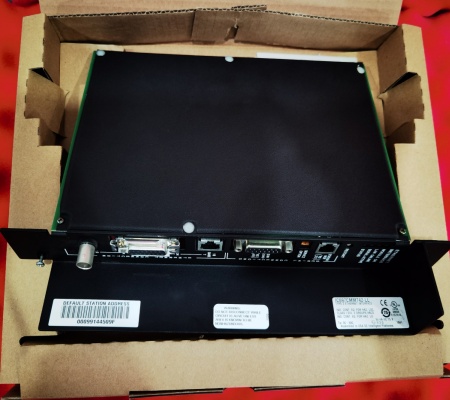GE IC697CMM742 COMMUNICATIONS MODULES
General info
| Manufacture | GE |
| Item No | IC697CMM742 |
| Article number | IC697CMM742 |
| Series | GE FANUC |
| Origin | United States(US) |
| Dimension | 180*180*30(mm) |
| Weight | 0.8 kg |
| Customs Tariff Number | 85389091 |
| Type | Communications Modules |
Detailed data
GE IC697CMM742 Communications Modules
The IC697CMM742 Ethernet Interface (Type 2) provides high performance TCP/IP communications for the IC697 PLC.
The Ethernet Interface (Type 2) plugs into a single slot in an IC697 PLC rack and can be configured with the IC641 PLC programming software. Up to four Ethernet Interface (Type 2) modules can be installed in one IC697 PLC CPU rack.
The Ethernet interface (Type 2) contains three network ports: 10BaseT (RJ-45 connector), 10Base2 (BNC connector), and AUI (15-pin D-type connector). The Ethernet interface automatically selects the network port in use. Only one network port can be used at a time.
The 10BaseT network port allows direct connection to a 10BaseT (twisted pair) network hub or repeater without the need for an external transceiver.
The 10Base2 network port allows direct connection to a 10Base2 (ThinWire) network without the need for an external transceiver.
The AUI network port allows connection of a user-supplied AUI (Attachment Unit Interface, or transceiver) cable.
The AUI cable connects the Ethernet interface to a user-supplied transceiver, which connects directly to a 10Mbps Ethernet network. The transceiver must be 802.3 compliant and the SQE option must be enabled.
Commercially available transceivers operate over a variety of 10Mbps media, including 0.4-inch diameter coaxial cable (10Base5), ThinWire coaxial cable (10Base2), twisted pair (10BaseT), fiber optic (10BaseF), and broadband cable (10Broad36).
The Ethernet interface (Type 2) provides TCP/IP communications with other IC697 and IC693 PLCs, host computers running the Host Communications Toolkit or CIMPLICITY software, and computers running TCP/IP versions of MS-DOS or Windows programming software. These communications use proprietary SRTP and Ethernet Global Data protocols over a four-layer TCP/IP (Internet) stack.








